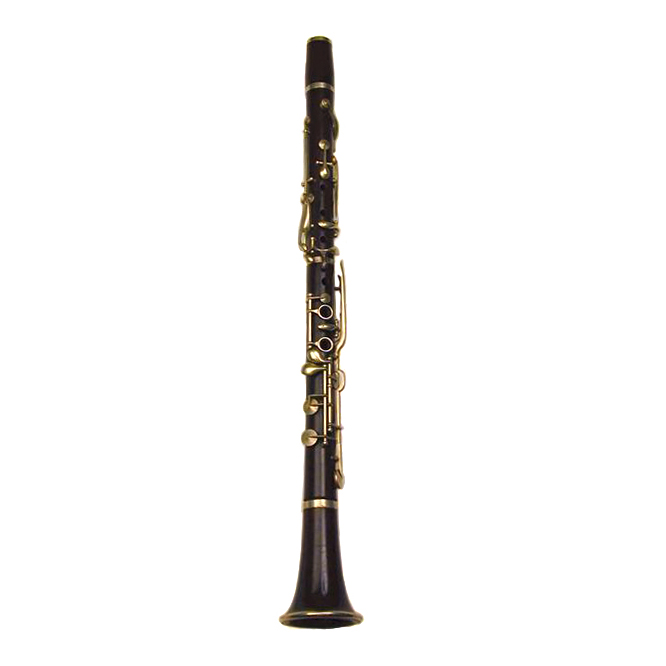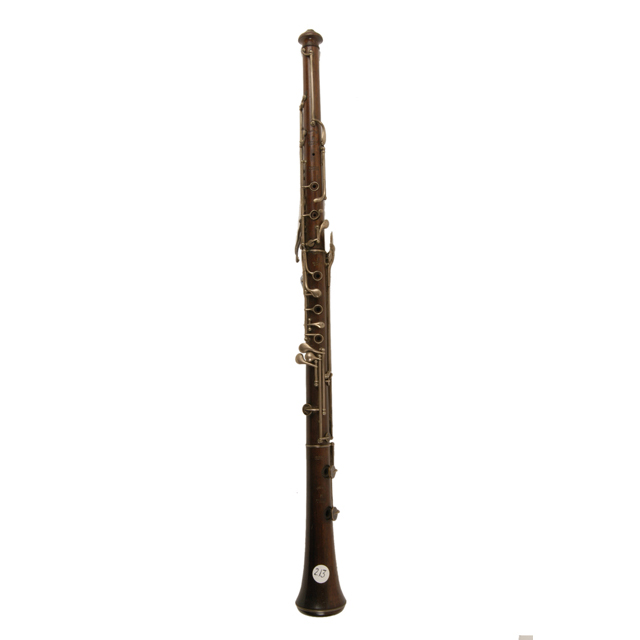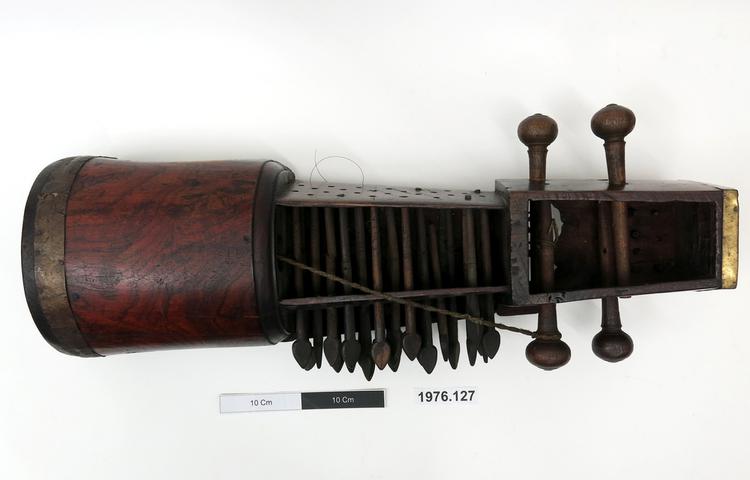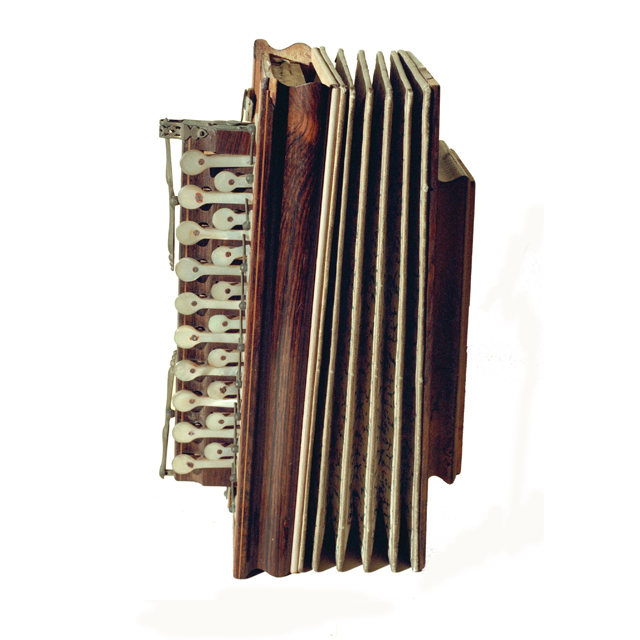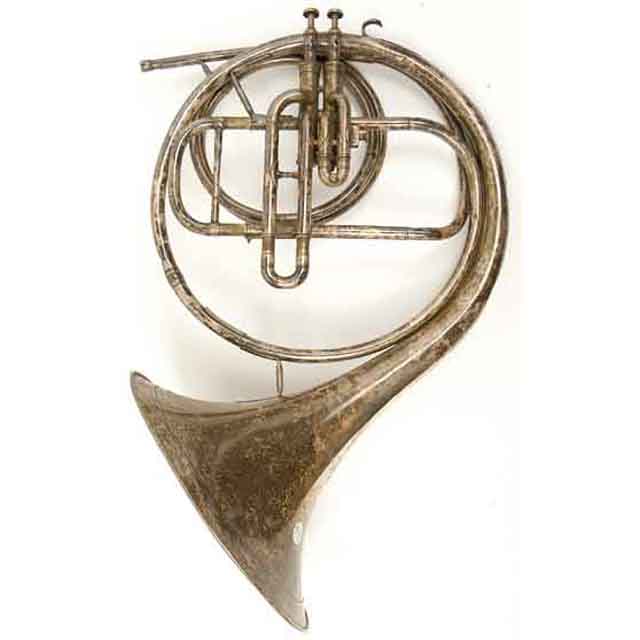
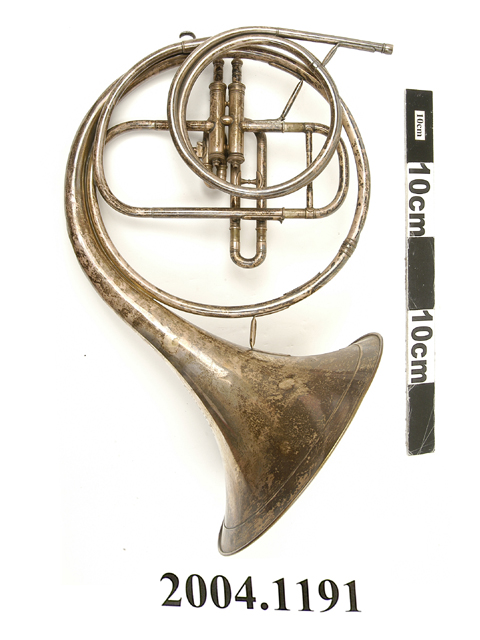
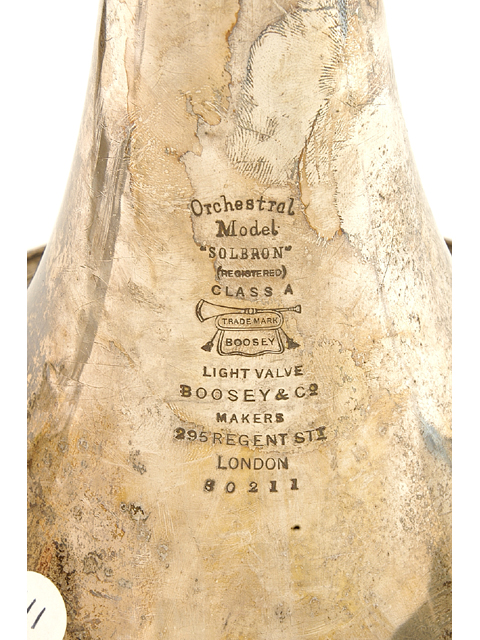
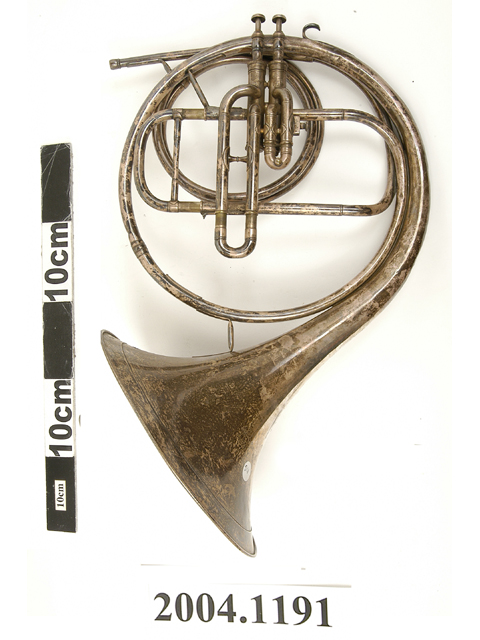
Orchestral piston horn. Solbron Light Valve model, high pitch . Nickel silver plated brass tubing. Two Périnet valves. One double wound crook for F. Mouthpiece missing. Socket for music card holder on second valve loop. Stamp on bell reads: Orchestral/Model/"SOLBRON"/(REGISTERED)/CLASS A/TRADEMARK/BOOSEY/LIGHT VALVE/BOOSEY & Co./MAKERS/295 REGENT ST./LONDON/80211. Bell design also includes historic trumpet and banner motif. The number 63857 is stamped on the second valve casing.
Before the invention of valves, horn players altered the pitch by closing off the instrument's bell to varying degrees with their hand. This also varied the tone colour, and many players were unimpressed by the uniformity offered by valves. The slow take-up of the new technology led to a number of transitional instrument designs. This horn has only two valves, whereas the modern instrument has at least three. To play every note, both hand stopping and valve changes are required. By the late 19th century the valve horn had become standard in most countries on the Continent, but this instrument shows the changeover in Britain lasted into the 20th century. Transcription of workshop order book production information: 'Date given out: 27th May 1910; Date received: 30th May 1910; No. of piston: 63857; No. of instrument: 80211; Description: F & E flat French Horn; Model: A40a; Charged to Regent Street: 15th June 1910; Given to polish: 1st June 1910; Workman's name: Bloomfield; Hours: 16 1/2; Cost: 13s.9d.'



